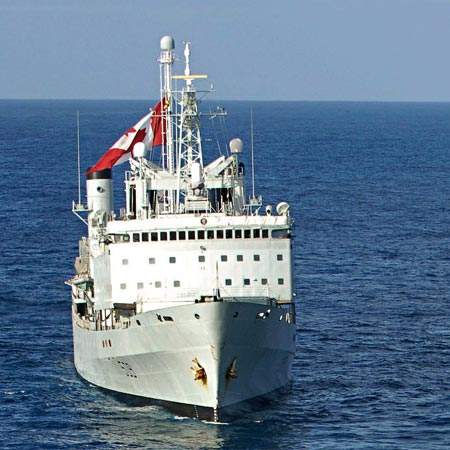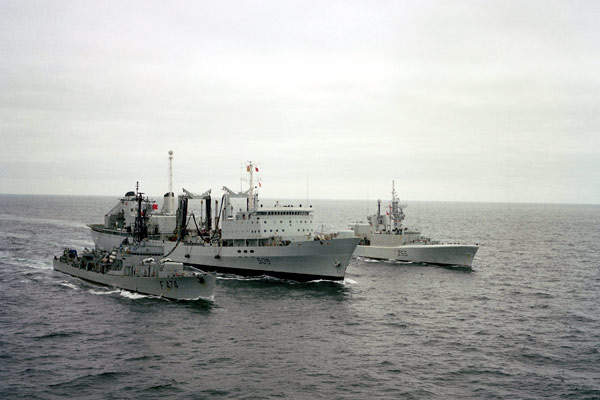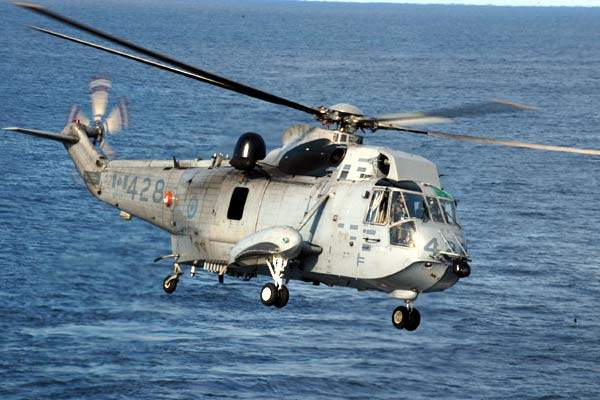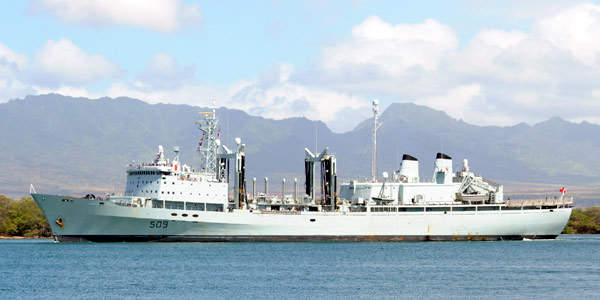The Protecteur class auxiliary oiler replenishment ships are in service with the Canadian Navy. The class was built by Saint John Shipbuilding and Dry Docks in Saint John, New Brunswick. The first of the class, HMCS Protecteur (AOR 509), entered service in 1969 and the second, HMCS Preserver (AOR 510), in 1970.
Protecteur class ships are deployed to supply fuel, food and ammunitions to Canadian and allied warships at sea. They allow warships to be at sea for longer periods without returning to port for fuel, supplies and maintenance.
HMCS Protecteur was laid down in October 1967 and launched in July 1968. The ship was commissioned in August 1969. It is currently serving the Pacific Command post in British Columbia. In October 1967 the keel was laid for HMCS Preserver. It was commissioned in August 1970. The ship is currently in service with the Atlantic Fleet.
In August 1990 HMCS Protecteur was deployed in the Persian Gulf to support Operation Desert Shield and later took part in Operation Friction during the Persian Gulf War. In September 1999 it was deployed for six months off the coast of East Timor during the country’s civil war.
In December 2009 the Canadian Government awarded a contract to Irving Shipbuilding for the refitting of HMCS Preserver. The refit involves structural repair, basic mechanical repairs, hull valve refurbishment and shaft line repairs.
Maintenance and repairs will also be carried out to main and auxiliary machinery, air conditioning, electrical and piping systems. The refit work is scheduled to begin in April 2010, with completion scheduled for February 2011.
Features
The vessel’s displacement is five times greater than that of a frigate. This allows it to supply provisions to a group of six destroyers for six weeks without returning to port for resupply. The ships are equipped with modern medical equipment.
The vessel has an overall length of 171.9m, a beam of 23.2m and a draught of 10.1m. Full load displacement of the ship is 24,700t. Protecteur can accommodate 365 personnel including 27 officers and 45 air crew members. The range is 4,100nm at 20kt and 7,500nm at 11.5kt.
Cargo
The replenishment at sea (RAS) stations hold liquid cargo including fresh water and fuel for ships and aircraft. Heavy cargo is transferred through heavy jackstay or vertical replenishment (VERTREP). The light jackstay is used to transfer personnel and light stores of up to 225kg.
The diesel fuel cargo capacity is 14,590t and the aviation fuel capacity is 400t. The vessel can also carry 1,048t of dry cargo and 1,250t of ammunition.
Aircraft facility
Protecteur class vessels have covered hangars to accommodate helicopters. They can support three CH-124 Sea King helicopters. A workshop is available onboard for overhaul and maintenance. Accommodation is provided for 45 air crew and air staff.
Weapon systems
Weapon systems include six Browning 0.50 calibre machine guns and two Phalanx 20mm Close-in weapon systems (CIWS). The guns can fire 4,500 rounds a minute.
Sensors
The Protecteur class is fitted with SPS-502 surface search radar and two Racal-Decca navigation radars operating at I-band and F-band. Racal-Decca radars identify fast-moving targets including helicopters, fixed-wing aircraft and fast surface craft.
Countermeasures
The countermeasures suite includes a Nixie towed torpedo decoy system and an MK 36 super rapid bloom offboard countermeasures (SRBOC) chaff and decoy launching system. SRBOC is a deck-mounted and mortar-type countermeasure system used to defend against hostile missiles.
Propulsion
The ship is powered by a General Electric steam turbine engine rated at 21,000shp. The engine drives a single shaft with a bow thruster. Two Babcock & Wilcox single drum boilers are installed on the vessel. The propulsion system provides a maximum speed of 20 knots.







